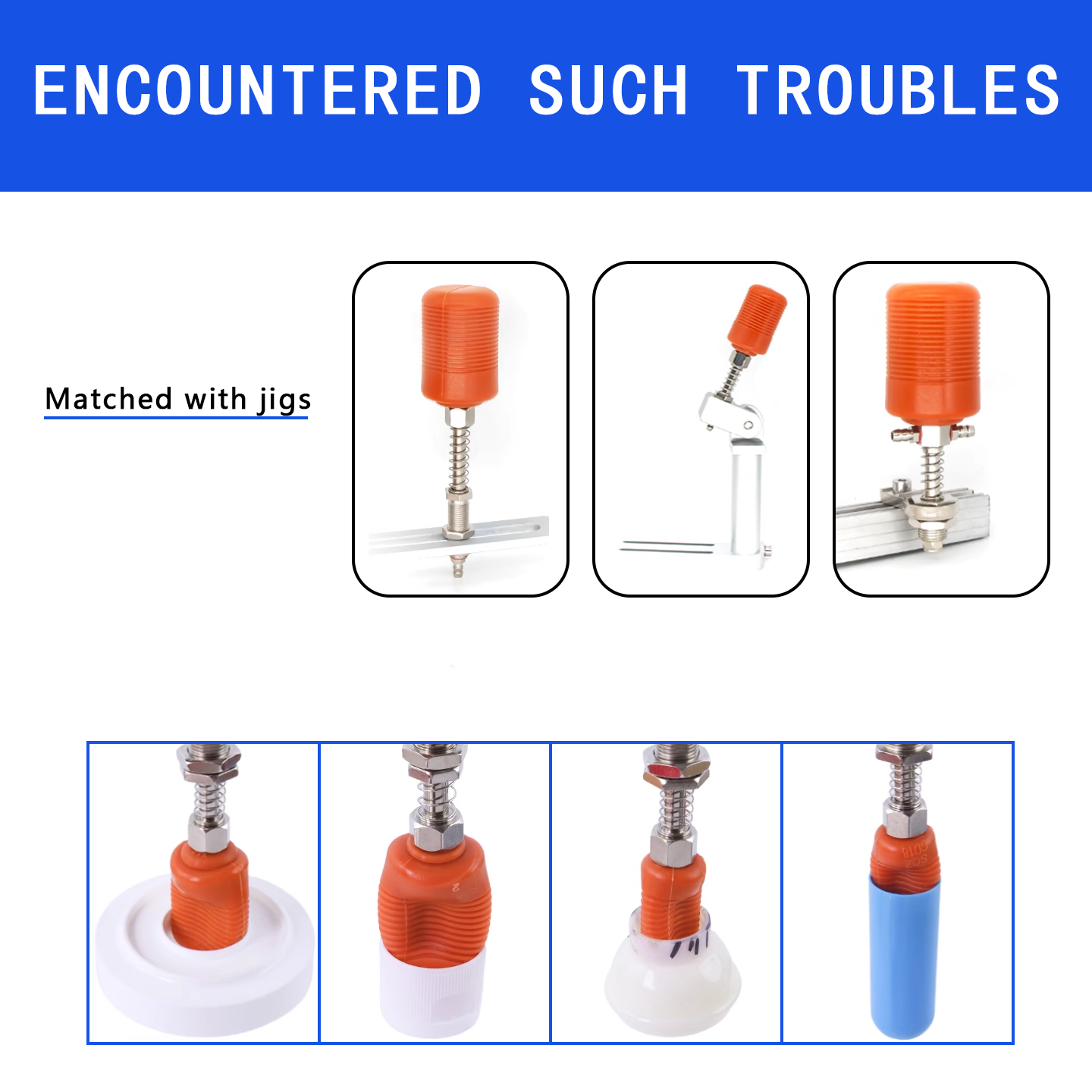If you work in injection molding or plastic manufacturing, you’ve probably faced this frustrating scenario: Your automated line grinds to a halt because a suction cup can’t grip a perforated plastic part. Holes cause vacuum leaks, leading to dropped components, damaged products, or costly downtime.
The good news? Traditional suction cups—designed for smooth, non-porous surfaces—aren’t the only option. Internal-support vacuum suction cups are here to revolutionize how you handle perforated plastic products. In this guide, we’ll break down why these specialized tools work, which types fit your needs, and how to integrate them into your existing workflow.

Why Perforated Plastic Handling Fails (And How to Fix It)
First, let’s diagnose the problem. Most suction cups rely on creating an airtight seal with a product’s exterior. But when that product has holes—whether for assembly, ventilation, or design—air seeps in, breaking the vacuum. Even small 2mm holes can render a standard suction cup useless.
This isn’t just an annoyance:
- Waste: Damaged parts from drops cost manufacturers thousands annually.
- Delays: Stopping lines to reposition parts slows production cycles.
- Inefficiency: Manual handling (a common workaround) increases labor costs and error risk.
Internal support vacuum suction cups solve this by shifting the focus from external sealing to internal stabilization. Instead of fighting the holes, they use them to their advantage—gripping the inner walls of the product while sealing gaps to maintain vacuum pressure.

4 Types of Internal-Support Vacuum Suction Cups (And Which One You Need)
Not all perforated plastic products are the same—so your suction cup shouldn’t be either. Here’s how to match the right tool to your application:
1. Vacuum Expansion Suction Jigs: For Fragile or Thin-Walled Parts
If you work with delicate perforated plastics (e.g., electronic device casings, thin automotive trim), vacuum expansion jigs are your best bet. They use vacuum pressure to expand a flexible inner core, which presses against the product’s internal walls for a secure grip—no external pressure that could warp or crack thin materials.
Best for: Parts with consistent hole sizes (3mm–15mm) and minimal structural rigidity.
2. Perforated Product Suction Cups: For Multi-Hole or Irregular Designs
Do your parts have multiple holes or uneven hole placement (e.g., home appliance panels, toy components)? Perforated product suction cups come with a customizable gasket that conforms to gaps, blocking air leaks while gripping the product’s exterior. The gasket is available in different thicknesses to match your hole size (2mm–20mm).
Pro tip: Pair these with a vacuum regulator to adjust pressure for softer plastics.
3. Internal-Support & External-Expansion Suction Cups: For Injection Molding Machines
Injection molding demands speed and precision—especially during demolding. Internal support & external-expansion cups are designed as direct replacements for standard injection molding grippers. They combine two features:
- Internal support to stabilize the part as it’s released from the mold.
- External expansion to align with mold cavities, reducing post-molding rework.
Why it matters: Clients report a 30% reduction in demolding errors after switching to this type.
4. Specialized Suction Cups for Perforated Plastic: For High-Temperature Environments
Many plastic manufacturing processes (e.g., post-mold cooling, heat sealing) involve high temperatures. Specialized perforated plastic suction cups are made from heat-resistant silicone (rated -20°C to 120°C) and anti-abrasive materials, so they hold up to daily use in high-cycle lines.
Compatibility note: Works with most robotic arms and injection molding machines (e.g., Fanuc, KUKA, Engel).
Real-World Results: How One Manufacturer Cut Waste by 40%
Let’s look at a practical example. A mid-sized automotive parts maker was struggling with perforated plastic sensor housings—standard suction cups dropped 1 in 10 parts, leading to $12,000 in monthly waste. After switching to internal-support vacuum suction cups:
- Dropped parts fell to 0.5% (a 95% improvement).
- Production speed increased by 15% (no more line stops).
- Labor costs for manual rework decreased by $3,500/month.
The key? They chose a vacuum expansion jig tailored to their housing’s 8mm holes—proving that “one-size-fits-all” doesn’t work for perforated plastics.
3 Tips for Choosing the Right Internal-Support Suction Cup
Ready to upgrade your handling process? Follow these steps to pick the perfect tool:
- Measure Your Holes: Note the diameter, number, and spacing of holes—this determines the gasket size or expansion core needed.
- Consider Your Environment: If you’re working with high heat (e.g., near injection molds), opt for heat-resistant materials. For food-grade plastics, choose FDA-approved silicone.
- Test for Compatibility: Ask your supplier for a sample to test with your existing automation line—this avoids costly mismatches later.

Ready to Stop the Headaches of Perforated Plastic Handling?
Internal-support vacuum suction cups aren’t just a “nice-to-have”—they’re a game-changer for manufacturers tired of waste, delays, and damaged parts. Whether you’re molding automotive components, panels, or electronic enclosures, there’s a specialized cup designed for your needs.
Want to find the right fit for your workflow? Request a free sample or talk to our team to learn how we’ve helped manufacturers cut waste by up to 40%.
Got questions about internal-support suction cups? Drop them in the comments below—we’ll answer!


